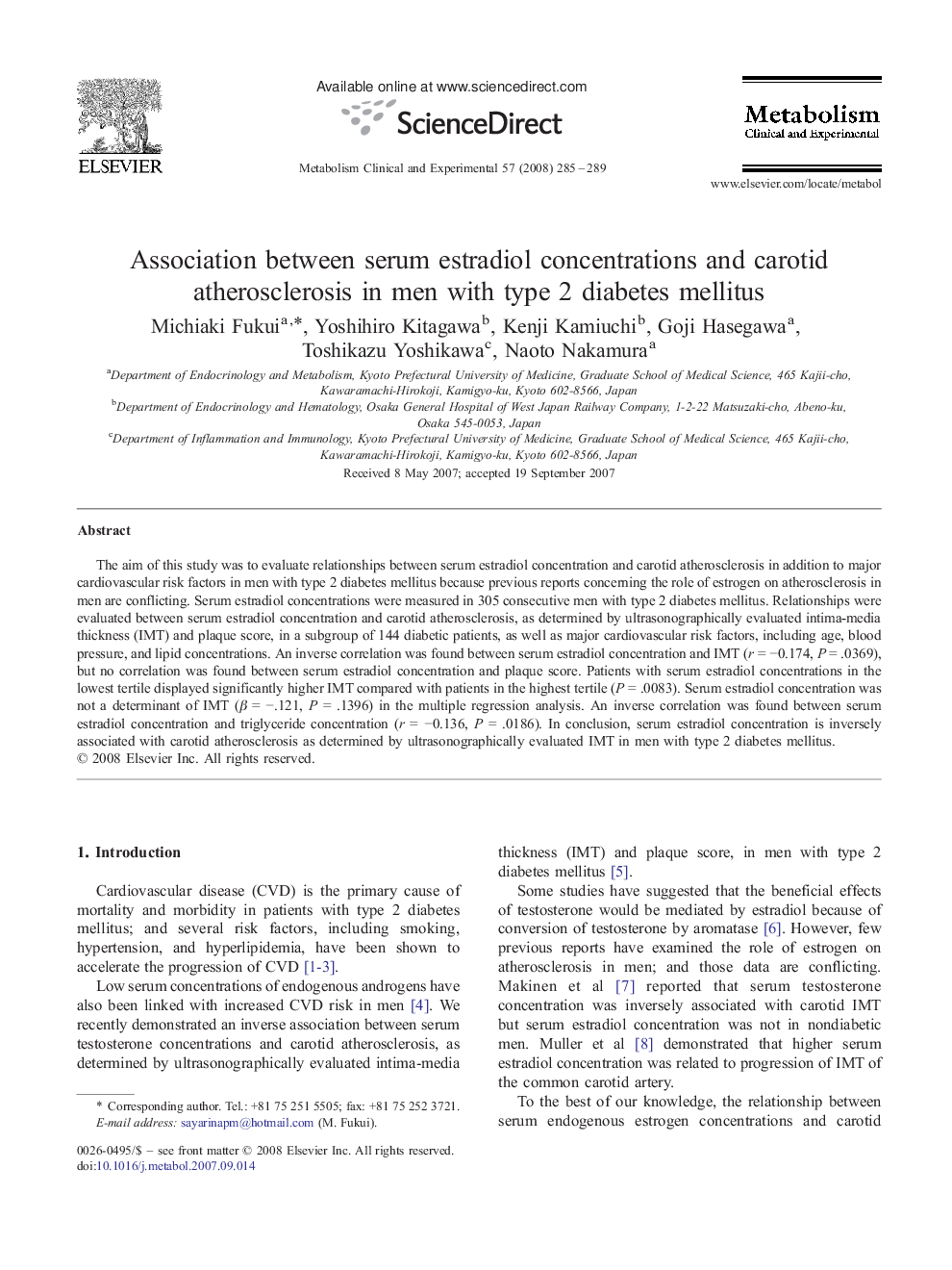| Article ID | Journal | Published Year | Pages | File Type |
|---|---|---|---|---|
| 2806382 | Metabolism | 2008 | 5 Pages |
The aim of this study was to evaluate relationships between serum estradiol concentration and carotid atherosclerosis in addition to major cardiovascular risk factors in men with type 2 diabetes mellitus because previous reports concerning the role of estrogen on atherosclerosis in men are conflicting. Serum estradiol concentrations were measured in 305 consecutive men with type 2 diabetes mellitus. Relationships were evaluated between serum estradiol concentration and carotid atherosclerosis, as determined by ultrasonographically evaluated intima-media thickness (IMT) and plaque score, in a subgroup of 144 diabetic patients, as well as major cardiovascular risk factors, including age, blood pressure, and lipid concentrations. An inverse correlation was found between serum estradiol concentration and IMT (r = −0.174, P = .0369), but no correlation was found between serum estradiol concentration and plaque score. Patients with serum estradiol concentrations in the lowest tertile displayed significantly higher IMT compared with patients in the highest tertile (P = .0083). Serum estradiol concentration was not a determinant of IMT (β = −.121, P = .1396) in the multiple regression analysis. An inverse correlation was found between serum estradiol concentration and triglyceride concentration (r = −0.136, P = .0186). In conclusion, serum estradiol concentration is inversely associated with carotid atherosclerosis as determined by ultrasonographically evaluated IMT in men with type 2 diabetes mellitus.
